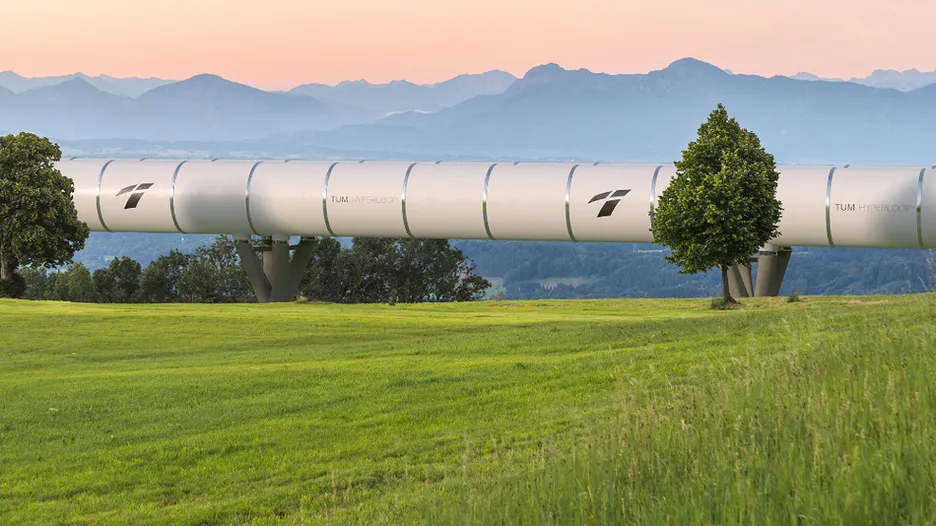Mobility and Transport: Hyperloop Technology

The Assistant Professorship of Sustainable Future Mobility is one of the professorships and chairs from different areas of the university participating in the new TUM Hyperloop program. Our mission is to develop a climate-neutral, ground-based transportation system, meeting the demand for ultra-fast connections between mobility hubs. In order to enable a thorough research of high-speed transport systems, two complementary research objectives are pursued in parallel, technology development and concept analysis.
Technology development
Between 2020 and 2023, a full-scale technology demonstrator will be developed and built. The demonstrator will consist of a 24-meter-long vacuum tube and a matching human-sized capsule. The technical implementation is crucial for the development of a future Hyperloop system. Integration and functional tests are to be carried out on the demonstrator in order to identify problems at an early stage and explore solutions that make technical and economic sense. In addition, experimental data will be collected that can be used for concept analysis.
Concept analysis
Parallel to the development and testing of the technology, modeling and analysis of the researched system as well as its large-scale implementation are necessary. This will test various concepts for technical and economic feasibility and improve system capability in the long term. In addition, potential safety risks will be investigated and identified at an early stage, and suitable measures will be developed. Finally, proposals for suitable implementation options in the existing traffic infrastructure are to emerge from these investigations.
Ongoing Research: The TUM Hyperloop Concept and Design
| Funding | Bavarian State Government |
The full-scale Hyperloop technology demonstrator can be divided into several divisions, which are pod structure, levitation system, propulsion system, electronics, tube, operation control and safety. Its technology is developed in four major stages: concept, design, building and testing. Within the TUM Hyperloop program, a concept has been developed by using a design decision tree method for application in complex hardware designs. The result of this concept, a Hyperloop technical baseline design, including its impact on track costs, passenger comfort and safety will soon be published.
Based on the Hyperloop technical baseline design, the actual design phase of the full-scale demonstrator follows. All subsystems are iteratively designed and tested individually on test stands. These include test stands for propulsion, levitation, door system, vacuum, and more. When the final design is complete, all parts and component go into production. By end of 2022, the building stage starts, with the result of a 24-meter-long vacuum tue and a matching human-sized capsule. All subsystems are integrated into one system in order to perform full functional tests.
Ongoing Research: The TUM Hyperloop Propulsion System
| Funding | Bavarian State Government |
One major technology development of a full-scale Hyperloop is the propulsion system. Here, concepts for linear propulsion systems have been evaluated and compared with respect to efficiency, costs, safety, and technical limitations. The outcome of this comparison is to develop a linear electric synchronous motor, promising high performance with regard to high velocities and efficieny but no trade of in safety related aspects. In the scope of this research topic an electric motor is developed, simulated, designed and currently under testing. Thereby, motor specific parameter are recorded by several sensors and compared to predicted analytical and simulated expectations. A wide range of disciplines such as expertise in electrical maschines, motor control, CAD, electromagnetic and thermal simulations, sensor integration, and communication and power electronics are united within the framework of this project.
The excitation system of the linear synchronous motor is a linear permanent magnet Halbach array and will be part of the Hyperloop Pod. In parallel research on high-temperature superconducting coils to be used as excitation system in high-speed applications in linear electric maschines is expected to start by end of 2022.